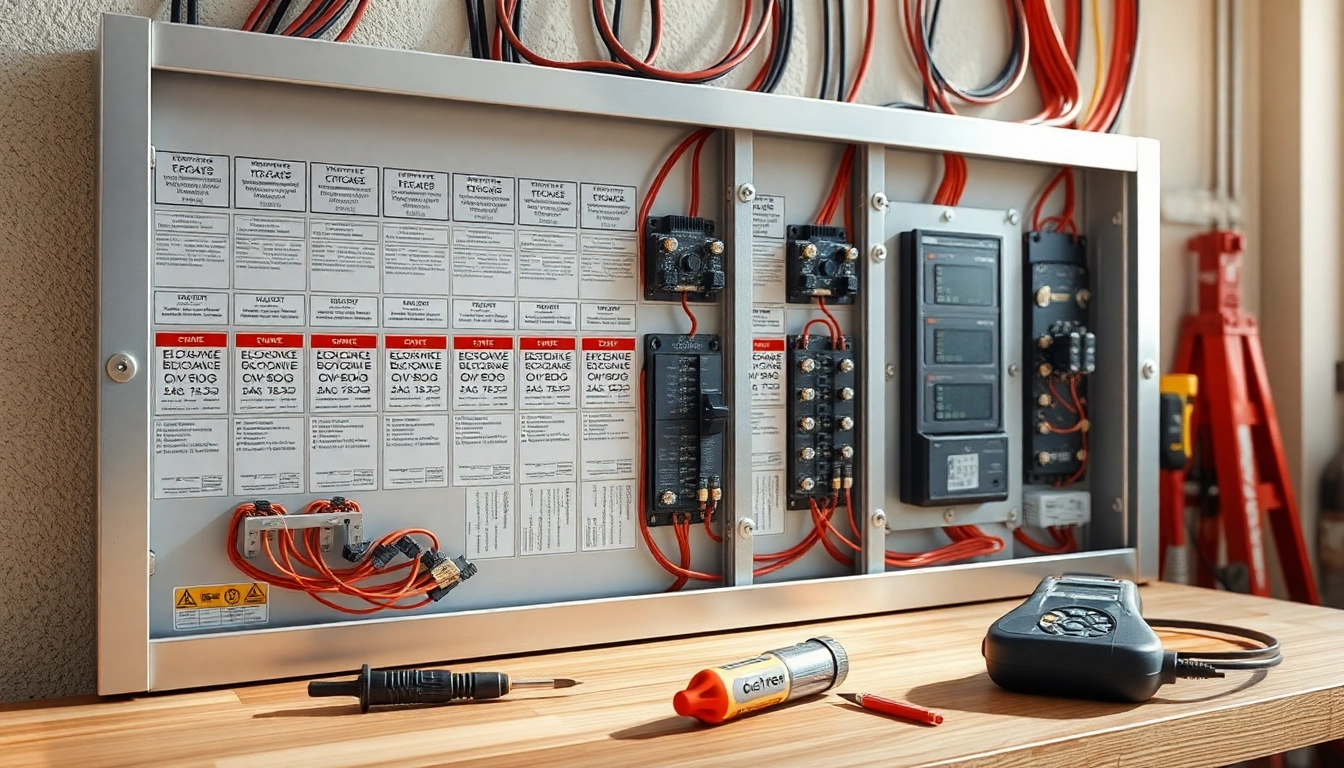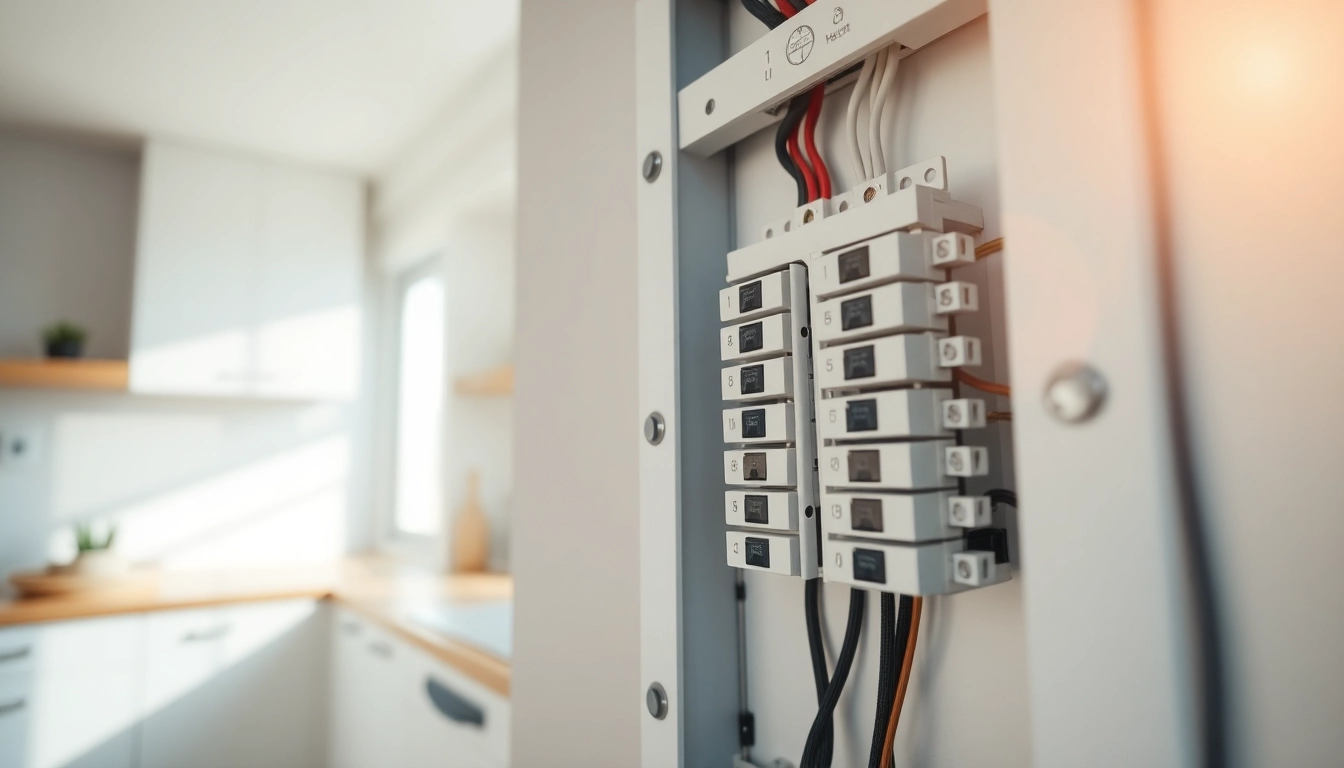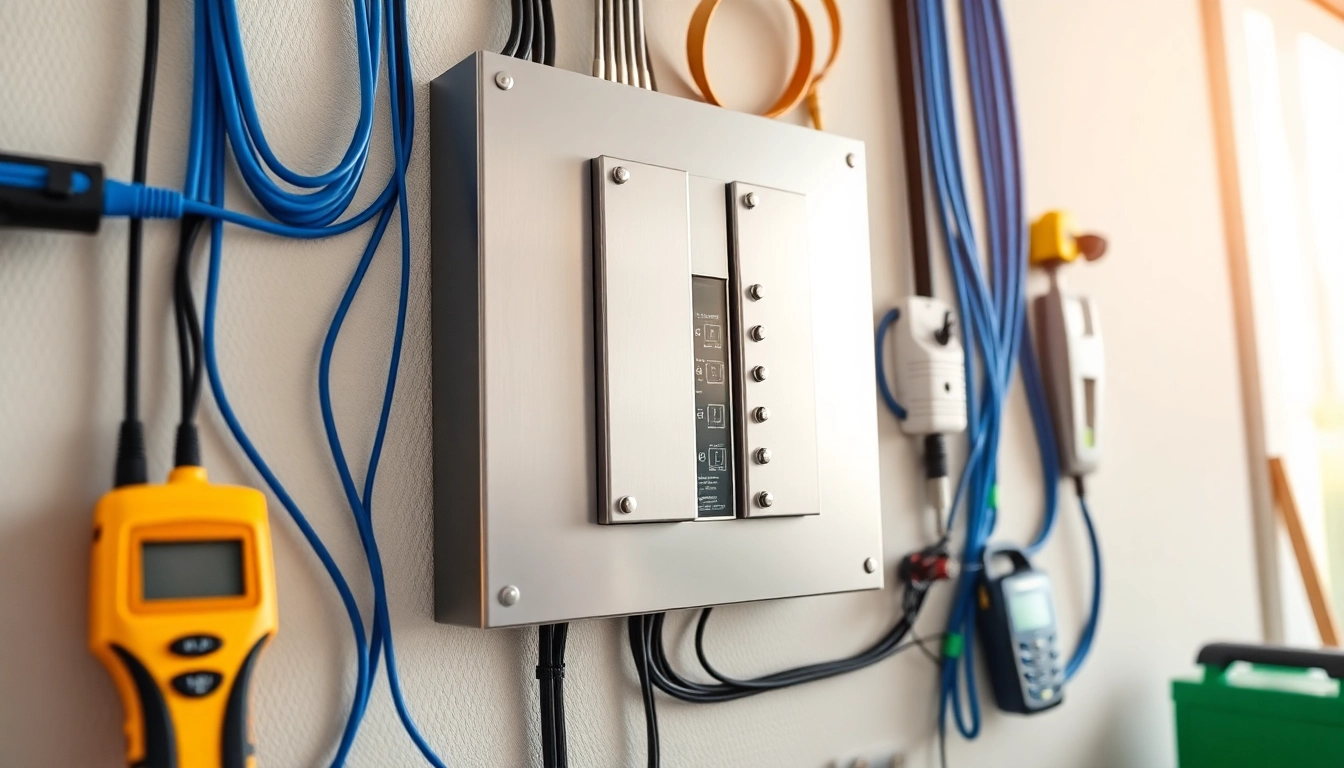
Overview of Electrical Panel Functionality
What is an Electrical Panel?
An Electrical Panel, often referred to as a circuit breaker box, is a crucial component of a building’s electrical system. It serves as the central hub that distributes electricity throughout the home or establishment. The panel receives electrical power from the utility grid and redistributes it to various circuits in the building, ensuring that every appliance and outlet receives the correct amount of power. Its design allows for safe and efficient management of electrical flows, protecting against overloads and potential hazards in case of faults.
Key Components of an Electrical Panel
The typical electrical panel contains several key components:
- Main Breakers: The primary switch that controls all power to the panel. It typically can disconnect the entire load from the power source.
- Circuit Breakers: These protect individual circuits by automatically cutting off the power supply in case of overload or short-circuit conditions.
- Bus Bars: Conductors that distribute electricity to different circuit breakers. They are critical for ensuring that the electricity flows efficiently across various circuits.
- Grounding System: This safety feature prevents electrical shocks and minimizes the risk of electrical fires by directing excess current safely into the ground.
- Enclosure: The panel is usually housed in a secure metal or plastic enclosure that protects the internal components from dust, moisture, and physical damage.
Importance of the Electrical Panel in Modern Homes
Electrical panels play an essential role in modern homes, functioning as the nerve center of electrical distribution. With the increasing number of electrical devices and appliances—such as HVAC systems, smart home technology, and high-powered electronics—the demand for reliable and safe power management becomes more critical. A well-functioning electrical panel not only ensures that all devices operate efficiently but also significantly reduces the risk of electrical hazards such as fires and shocks.
Signs You Need to Upgrade Your Electrical Panel
Indicators of Insufficient Power Supply
One of the most apparent signs that you may need to upgrade your electrical panel is the consistent tripping of circuit breakers or blown fuses. These issues often arise when the demand for electricity exceeds the panel’s capacity, usually evidenced by:
- Frequent interruptions in power throughout the home.
- Inability to power multiple high-energy devices simultaneously.
- Lights flickering or dimming when appliances turn on.
- Burning smells or scorch marks near outlets or circuit breakers.
Common Safety Concerns with Outdated Panels
Older electrical panels, particularly those over 20 years old, often do not meet modern safety standards. Signs of outdated panels may include:
- Presence of fuse boxes instead of circuit breakers.
- Use of aluminum wiring, which is more susceptible to overheating.
- Lack of GFCI or AFCI circuit breakers, which are crucial for preventing electrical shock and reducing fire risk.
- Physical damage or corrosion visible on the panel.
Benefits of Upgrading Your Electrical Panel
Upgrading your electrical panel brings numerous benefits that enhance safety, functionality, and even property value:
- Increased Capacity: New panels can support greater electrical loads, accommodating modern appliances and systems.
- Enhanced Safety: Upgraded panels minimize the risk of electrical fires and shocks with better protective features and mechanisms.
- Improved Energy Efficiency: New technology leads to better energy management, lowering utility bills by minimizing power wastage.
- Future-Proofing: An updated electrical panel prepares your home for potential future electrical needs as smart technologies become more prevalent.
Steps to Prepare for an Electrical Panel Upgrade
Assessment of Current Electrical Load
Before upgrading, a thorough assessment of your current electrical load is crucial. This involves determining the total wattage being consumed by all appliances and devices. You should:
- List all major appliances and their power ratings.
- Consider the cumulative wattage of devices you frequently use simultaneously.
- Account for outdoor and specialty items, such as pools or hot tubs.
Once you have a clear understanding of your load demands, you can determine the appropriate panel capacity.
Choosing the Right Panel Size
The size of an electrical panel is measured in amperage—common sizes include 100, 150, and 200 amps. The right choice depends on your total electrical load. If your calculations suggest an excess of 80% of your panel’s capacity, upgrading to a higher amperage panel may be necessary. Consulting with a licensed electrician will ensure you choose the size that best accommodates both your current and anticipated future electrical needs.
Understanding Local Building Codes
Compliance with local building codes and regulations is essential during any electrical upgrade. Research specific guidelines, including permits required, installation practices, and safety codes that may apply. This information can typically be obtained through local government or electrical inspector offices, ensuring your upgrade is not only efficient but compliant and safe.
Cost Considerations for Upgrading Electrical Panels
Average Costs of Electrical Panel Upgrades
The cost for upgrading an electrical panel can vary significantly based on several factors, including size, labor, and the type of panel chosen. On average, homeowners can expect to pay between $1,500 and $3,000 for a complete panel upgrade. It’s essential to get quotes from different contractors for competitive pricing.
Budgeting for Installation and Labor
Don’t forget to include installation and labor costs in your budget projections. Depending on the complexity of the installation, these fees can range from $300 to $1,500. Hiring a licensed electrician experienced in panel upgrades is crucial, as this ensures safety and compliance with regulations, potentially saving you money in the long run.
Financing Options for Electrical Panel Replacement
If the upfront costs overwhelming, consider financing options. Many contractors offer financing plans, or you might explore personal loans or home equity lines of credit (HELOC) for manageable payment plans. Evaluate your options, keeping in mind upcoming maintenance or upgrade costs in your financial planning.
Maintenance Tips for Your Electrical Panel
Routine Checks and Inspections
Regular maintenance is crucial to ensure your electrical panel operates efficiently. Recommended routine checks include:
- Inspecting for corrosion, rust, or any physical damage on the panel.
- Testing circuit breakers for proper functionality.
- Reviewing connections and wiring for signs of wear or loose connections.
Conduct these inspections quarterly and schedule a professional evaluation annually to ensure lasting performance.
Common Repairs and Issues to Watch For
During inspections, be on the lookout for potentially hazardous issues, such as:
- Frequent tripping of breakers.
- Burning smells or signs of overheating.
- Unexpected flickering lights, which could indicate an overload.
If any of these symptoms occur, consult a certified electrician immediately to address the issues before they escalate.
Longevity and Lifespan of Electrical Panels
Electrical panels have a lifespan of approximately 20 to 30 years, depending on usage and maintenance. Keeping your electrical panel in good condition can extend its life, but outdated models may eventually need replacing regardless of state. Regular maintenance and upgrades can ensure your electrical system remains safe and efficient, adapting to the demands of modern electrical use.







